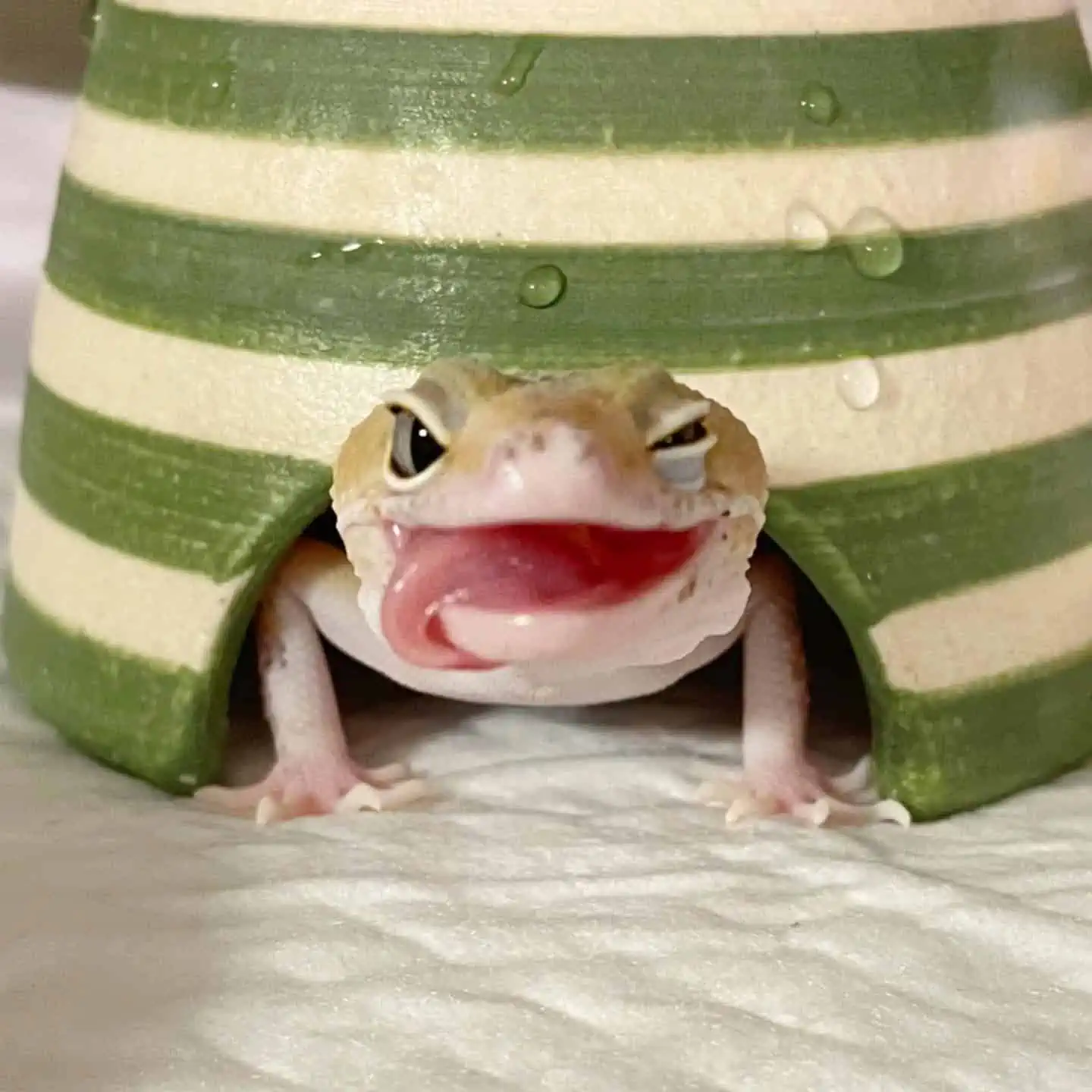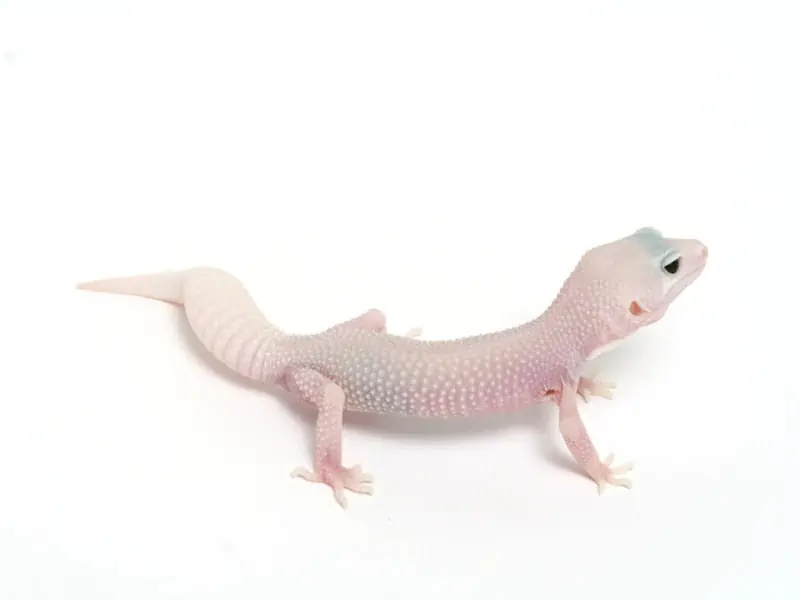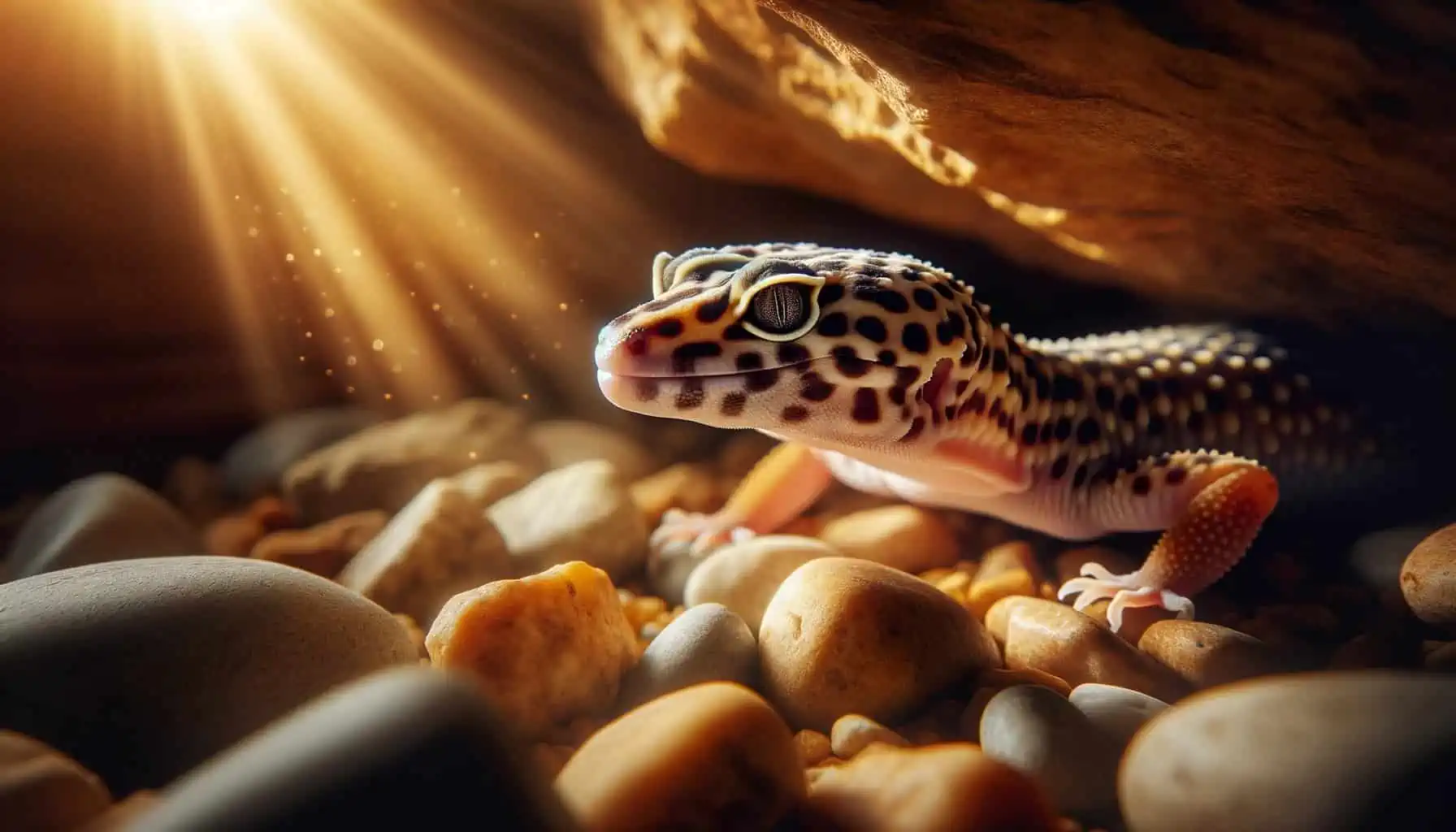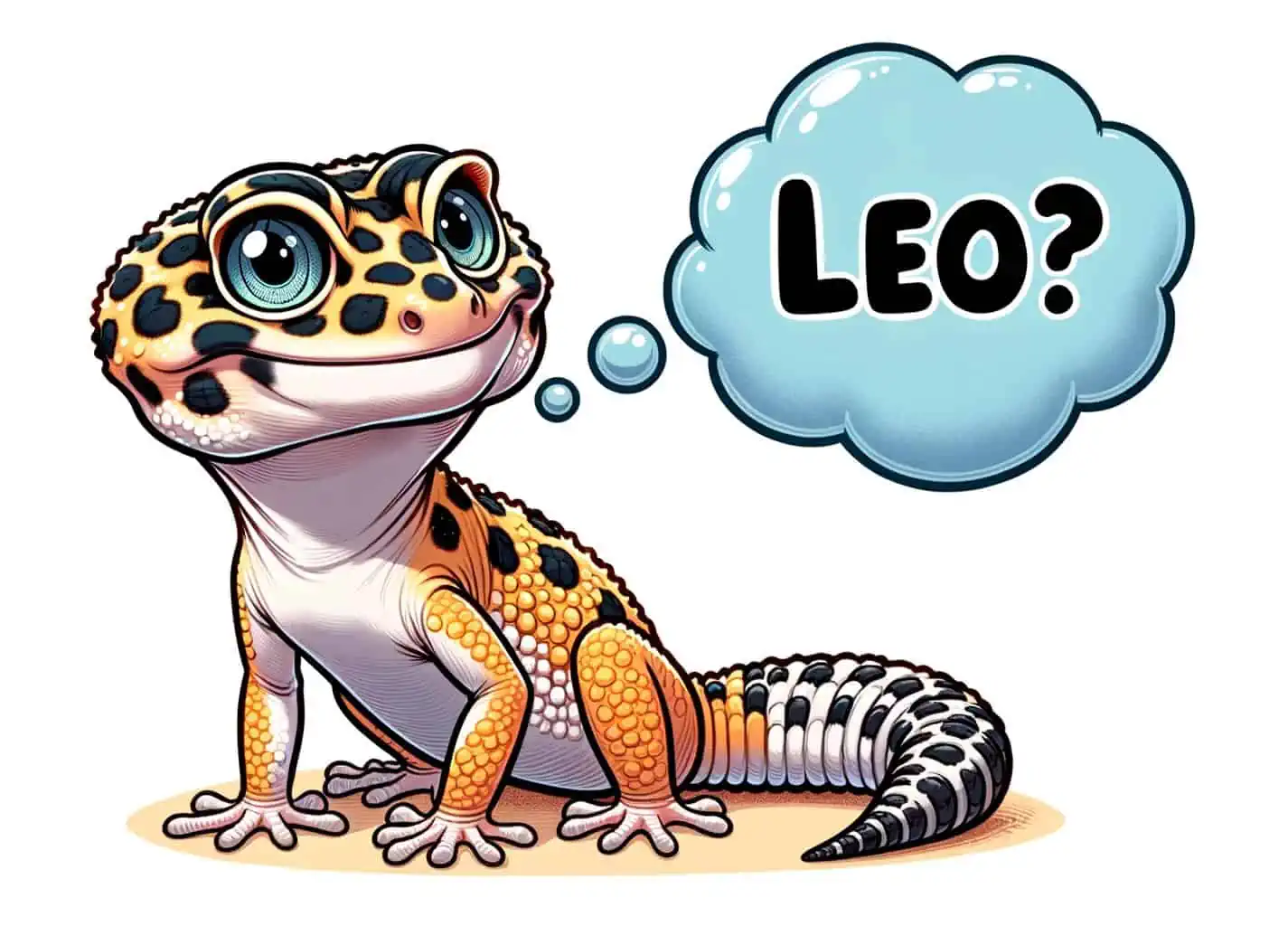Breeding leopard geckos is a process many find straightforward. Their adaptability and nature contribute to their reputation as one of the easier reptiles to breed. However, it’s not without challenges. Factors like age, health, and genetics can influence the breeding outcome. To ensure success and safety, thorough research and understanding are vital.
Housing Setup: For optimal hatchling growth, use a plastic shoebox with paper towels, complete with a shallow water tray and proper shelter.
Temperature Gradient: Maintain a strict temperature range: a constant 90 degrees under the hide box and a cool end not falling below 73 degrees.
Diet: Feed hatchlings small mealworms or ⅓ grown crickets every other day, with a pause of one or two days per week for digestion.
Size Transition: Once the hatchling reaches approximately 7 inches, it’s time to transition them to a larger, more permanent setup.
Feeding Schedule: Skipping a feeding day or two per week ensures the hatchlings don’t get overwhelmed and aids in digestion.
Life Cycle of the Leopard Gecko: Breeding Basics
One of the pivotal aspects of breeding any species is having a thorough understanding of its life cycle. This knowledge not only aids in the breeding process but also ensures the well-being of the geckos at every phase of their life.
When Leopard Geckos hatch, they enter the world as tiny replicas of their parents, albeit with brighter colors. This neonate stage lasts for about two weeks, after which they transition to the juvenile stage. As juveniles, their primary focus is on growth, and they’re incredibly active and curious. Once they reach 10 to 12 months of age, they’re considered adults, ready to breed and continue the cycle.
Duration of Each Stage and Key Milestones
Neonate (0-2 weeks): Fresh out of the egg, these newborns are vulnerable. It’s crucial they have the right conditions to shed for the first time and begin their first meals.
Juvenile (2 weeks to 10-12 months): A period of rapid growth. It’s during this phase that their diet becomes varied, and they begin to exhibit more distinct personalities. Notably, around the 6-month mark, their coloration starts to resemble their final adult hues.
Adult (10-12 months onwards): By this time, Leopard Geckos have reached sexual maturity. For females, it’s essential to ensure they’re of the right weight and health before considering breeding.
Changes in Behavior and Appearance Over Time
As Leopard Geckos grow, you’ll notice an evolution in both their behavior and appearance. Juveniles are more skittish but incredibly curious, always on the move. Adults, on the other hand, tend to be more settled and might even show preferences for certain hiding spots or foods.
In terms of appearance, while their fundamental patterns remain, the brightness of their colors during the neonate and juvenile stages will give way to deeper, more muted tones as adults. Moreover, their size, obviously, increases, and males will start to show prominent femoral pores, an indicator of their maturity.
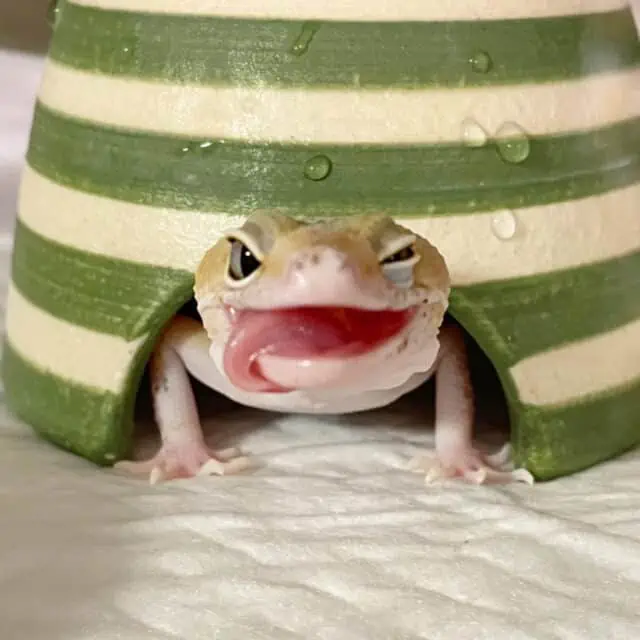
How To Prepare For Breeding Leopard Geckos
Before diving into the world of leopard gecko breeding, certain preparations are paramount. Ensuring you have a pair of healthy geckos, setting up a conducive environment for them, and understanding their specific needs can be the difference between a successful breeding experience and a challenging one.
Choosing a Female and Male Leopard Gecko
Selecting the right female and male leopard geckos is the foundational step in the breeding process. It’s not as simple as picking any two geckos; there’s a science behind the choice.
First and foremost, health assessment is critical. Healthy geckos are more likely to breed successfully and produce healthy offspring. Age is another vital consideration. Young geckos might not be mature enough for breeding, and older geckos might have reduced fertility.
Diving deeper, the genetics and desired traits of the breed come into play. If you’re aiming for specific colorations or patterns in the offspring, understanding the genetics of the parents becomes essential. It’s also beneficial to know the female’s history of egg-laying.
A female with a proven track record of producing healthy clutches can be a safer bet. On the other hand, the male’s ability to successfully mate, often gauged by his behavior and past mating records, is equally crucial.
Setting Up the Terrarium/Tank for Mating Purposes
Setting up a terrarium or tank for leopard gecko breeding is more than just placing two geckos together; it’s about creating the right environment to facilitate successful mating.
The foundation of a good terrarium/tank setup is its size. A spacious enclosure ensures the geckos have ample room to move, explore, and, most importantly, have some personal space, reducing potential stress.
Within this space, hiding spots are essential. Just as in their natural habitat, leopard geckos seek out secluded spots to rest, hide, and feel secure.
By providing multiple hiding spots, you’re ensuring both the male and female gecko can have a retreat when they need it, ensuring their comfort and safety.
The basics like a water dish and a heat source are non-negotiables. Leopard geckos, like all reptiles, are ectothermic, meaning they rely on external sources to regulate their body temperature.
This is where the heat source comes into play. It should be strategically placed to create a temperature gradient within the enclosure, allowing the geckos to choose their ideal warmth level. A water dish, kept clean, ensures they remain hydrated.
While the primary enclosure is vital, introducing the idea of a separate breeding tank can be beneficial. This dedicated space can be optimized for mating and, subsequently, for the female to lay her eggs.
One of the main distinctions in a breeding tank is the substrate. A substrate that supports egg-laying, like moist vermiculite or peat moss, can create an ideal spot for the female to deposit her clutch.
Temperature and Humidity Requirements for Leopard Gecko Breeding
When breeding leopard geckos, maintaining the proper terrarium temperature and humidity is crucial to ensure success. Temperature requirements for leopard gecko breeding dictate that during the day, the terrarium should be kept between 88°F and 90°F.
As nighttime approaches, a slight drop in temperature to around 75°F is both acceptable and beneficial. This mimics their natural environment, where temperatures drop after sunset.
Equally as vital is monitoring the terrarium humidity. For leopard gecko breeding, it’s recommended to maintain a humidity level within the range of 40% to 50%. If the humidity falls below this range, misting the enclosure with clean water can help increase it.
It’s essential to strike a balance; too much humidity can lead to respiratory issues, while too little can cause shedding problems.
Proper Nutrition and Diet for Adult and Hatchling Leopard Geckos
Ensuring proper nutrition and diet is fundamental for the health and growth of leopard geckos, whether they’re adults or just hatched. For adults, a varied diet of insects like crickets and mealworms, dusted with the right supplements, is essential to maintain their vitality and reproductive health.
However, the needs of hatchlings differ slightly. After emerging from their eggs, it’s vital not to feed hatchlings immediately. Instead, wait until after their first shedding.
Following this initial shedding, they can be introduced to small mealworms or 1/3 grown crickets. When it comes to feeding frequency, it’s crucial not to overburden their still-developing digestive systems. Regular, smaller feedings are more beneficial than infrequent, larger meals.
The environment for these young geckos is equally important. A recommended setup for hatchlings is the shoebox model, which provides them with a controlled environment. The floor can be lined with paper towels for hygiene and easy cleanup.
Add a shallow water dish for hydration, ensuring it’s not deep enough for the hatchlings to drown in. And don’t forget to provide appropriate shelter or hiding spots, which will give them a sense of security as they acclimatize to their new surroundings.
Supplementation for Breeding Leopard Geckos
During the breeding season, ensuring that your leopard geckos receive the right supplements becomes even more vital. For both male and female geckos, vitamins and especially calcium are paramount to supplement their diets. The increased nutritional demand primarily stems from the energy and resources that breeding pairs expend during this period.
For female geckos, calcium supplementation is of utmost importance. Egg production places a heavy toll on a female’s calcium stores, and without adequate supplementation, she can suffer from calcium deficiency. Such a deficiency can result in significant health issues, ranging from soft eggs to metabolic bone disease. By supplementing with calcium, breeders can ensure healthy egg development and reduce the risk of such complications.
Lighting Schedule for Leopard Geckos
A well-regulated lighting schedule plays a pivotal role in the breeding process for leopard geckos. Just as in their natural habitat, the balance of light and dark can influence their reproductive behavior and overall health. Both adult geckos and hatchlings benefit from consistent lighting conditions.
For adults, an optimal lighting schedule simulates a natural day-night cycle, setting the stage for reproductive behavior by mirroring their wild environments. Similarly, hatchlings thrive when exposed to a naturalistic light regimen, which assists in their growth and well-being. In terms of specifics, while leopard geckos are not as heavily reliant on UVB lighting as some other reptiles, the duration of light exposure still matters. Generally, a 12-hour light and 12-hour dark cycle is effective.
To maintain these consistent lighting conditions without constant manual intervention, the use of timers is recommended. By automating the process, breeders can ensure that the geckos experience a steady light-dark rotation, replicating the cycles they would naturally undergo in the wild.
Mating Rituals & Breeding Season of Leopard Geckos
Just like many animals, leopard geckos have evolved distinct behaviors and signals to indicate readiness for mating. These rituals, coupled with the proper timing during their breeding season, ensure the highest chances of successful reproduction.
Introducing Your Female and Male Geckos
For leopard gecko enthusiasts aiming for successful breeding, timing is of the essence. While these reptiles can mate throughout the year in captivity, they predominantly adhere to a breeding season from January to October in their natural habitat.
Being crepuscular animals, leopard geckos are most active and receptive during dawn and dusk. Hence, introductions for mating purposes are best scheduled during the evening or in the early hours before sunrise, aligning with their natural behavioral patterns.
Recognizing When the Female is Ready to Breed
Determining the right moment to breed a female leopard gecko entails keen observation of both physical and behavioral signs. Crucially, the age and weight of the gecko are foundational parameters: females should be at least one year old and weigh a minimum of 45 grams before considering them for breeding.
Beyond these benchmarks, it’s essential to monitor for readiness cues. Physical signs such as a robust size and a healthy appearance, coupled with specific behavioral indicators, can signal that a female leopard gecko is in her optimal breeding phase.
Signs of Successful Mating
One of the primary indicators of successful mating in leopard geckos is the male’s behavior. When he lifts and rattles his tail, it’s a strong hint that he’s initiating the mating process. Concurrently, the female’s behavior offers its own set of signals. If she freezes up and permits the male to approach her without resistance, it’s an indication she’s receptive.
The mating ritual often culminates with the male climbing onto the female’s back and biting her neck gently. Once the act is complete, a clear sign of successful mating is the separation of the two geckos after breeding.
Natural Behaviors Associated with Mating Rituals
Leopard geckos possess a unique and fascinating courtship process that’s integral to their mating rituals. Within this process, territorial behaviors play a critical role. Male geckos often assert their dominance and readiness to mate through distinctive tail rattling. This act not only signals interest but also serves as a territorial display.
As he approaches the female, she may respond by freezing up, a behavior indicating her receptivity to his advances. However, this delicate dance isn’t always smooth. There can be instances of aggression or rejection from either party during the mating process. Such behaviors might manifest as biting, loud hissing, or aggressive chasing.
Eggs Laying in Leopard Geckos
The process of egg-laying in leopard geckos is a meticulously orchestrated natural event. Typically, after successful mating, a female leopard gecko undergoes a gestation period that lasts around three to five weeks. Once this period nears its end, she will produce a clutch of eggs, usually consisting of one or two eggs at a time.
For breeders, it’s essential to provide a conducive environment for this process to unfold seamlessly. A suitable egg-laying box is vital in this regard. This box, often filled with moist substrate like vermiculite or peat moss, should be placed within the female’s enclosure.
It offers her a humid, safe, and secluded spot to lay her eggs. The moisture in the substrate aids in preventing the eggs from drying out and facilitates the digging behavior female geckos exhibit when preparing to lay.
Recognizing when a female gecko is about to lay her eggs is crucial for breeders. Often, there are several signs that indicate readiness. Physically, a gravid (egg-bearing) leopard gecko’s abdomen becomes noticeably distended, revealing the shape of the eggs within.
Behaviorally, the female may become more restless, frequently digging or spending considerable time in the egg-laying box. When the time arrives and she lays her eggs, utmost care is essential during any handling.
It’s crucial not to roll or change the orientation of the eggs. Doing so can harm the developing embryo inside, as it gets attached to the top side of the egg during its growth.
After the eggs have been laid, breeders typically transfer them to an incubation tray to regulate the conditions necessary for successful hatching. Before beginning the transfer, one should mark the top of the egg with a soft pencil to ensure it remains in the correct position.
Gently pick up the egg, being cautious not to roll it, and place it on the incubation tray filled with an incubation medium, such as vermiculite, at a consistent depth. This medium should be moist but not wet, as excessive moisture can be detrimental.
The eggs’ position is of paramount importance; turning them from their original orientation can disrupt the embryo’s attachment, potentially leading to the egg’s failure to hatch.
Once all eggs are securely placed in the incubation tray, it’s then kept in an incubator, where temperature and humidity can be closely monitored to ensure optimal conditions for hatching.
Eggs Incubation
Incubating leopard gecko eggs is a delicate process that revolves around maintaining specific temperature ranges to ensure the successful development of the embryos.
The ideal temperature range for this process is between 77 and 92°F (~25-33°C). Notably, temperatures dipping below 74°F (~23.3°C) can be fatal for the embryos, hindering their growth and compromising the success rate of the incubation.
A fascinating aspect of leopard gecko incubation is the role of temperature in sex determination. Specifically, the incubation temperature plays a pivotal role in deciding the sex of the hatchlings.
At the lower end of the temperature spectrum, predominantly female hatchlings emerge. Conversely, higher temperatures tend to produce mostly male offspring.
Those aiming for a mixed clutch of both male and female hatchlings should aim for mid-range temperatures within the stipulated range.
Eggs Hatching
The culmination of the leopard gecko breeding process is the moment when eggs begin to hatch, revealing the new life that has been developing inside. Hatching is a critical period, influenced by several factors, including the conditions during incubation and the care provided in the lead-up to this stage.
Hatchling Care
Proper care for hatchling leopard geckos is pivotal to ensure their healthy growth and development. Initially, these delicate creatures thrive best in a simplistic environment, which is why a plastic shoebox setup with paper towels as a substrate is recommended.
This setup should include a shallow water tray for hydration and an appropriate shelter to offer them a sense of security. As for temperature, maintaining a gradient is essential: aim for a consistent 90-degree spot under the hide box and ensure the cool end of their enclosure doesn’t dip below 73 degrees.
Nutrition-wise, these tiny geckos have specific dietary needs. Offering them small mealworms or ⅓ grown crickets as a staple diet is appropriate. To promote healthy digestion and growth, it’s advisable to feed them every other day, making sure to give them a break from feeding one or two days a week.
FAQs
What is the ideal age to start breeding Leopard Geckos?
Most experts recommend waiting until the Leopard Gecko reaches sexual maturity. Typically, females should be at least one year old and weigh around 45-50 grams, while males can start a bit earlier, around 8-10 months.
How often can a female Leopard Gecko lay eggs?
A healthy female Leopard Gecko can lay multiple clutches of eggs in a single breeding season. On average, they produce a clutch of two eggs every 4-6 weeks during the breeding season, which can last several months.
Is it normal for hatchlings to have different colors and patterns than their parents?
Absolutely! Due to the complex genetics of Leopard Geckos, offspring can exhibit a variety of colors and patterns, some of which might not be immediately visible in the parents but are carried as recessive traits.
Do I need to provide any special diet or supplements during the breeding season?
Yes, breeding females especially benefit from additional calcium and vitamin supplements to support egg production. Ensuring a well-balanced diet with gut-loaded insects and occasional supplements can enhance the health of both the parents and the offspring.
How can I ensure the safety of the eggs during incubation?
Regular monitoring is key. Maintain stable temperature and humidity within the incubator, avoid abrupt environmental changes, and handle the eggs with extreme care. It’s also wise to mark the top of the egg with a soft pencil when laying to ensure it remains in the correct orientation throughout incubation.

